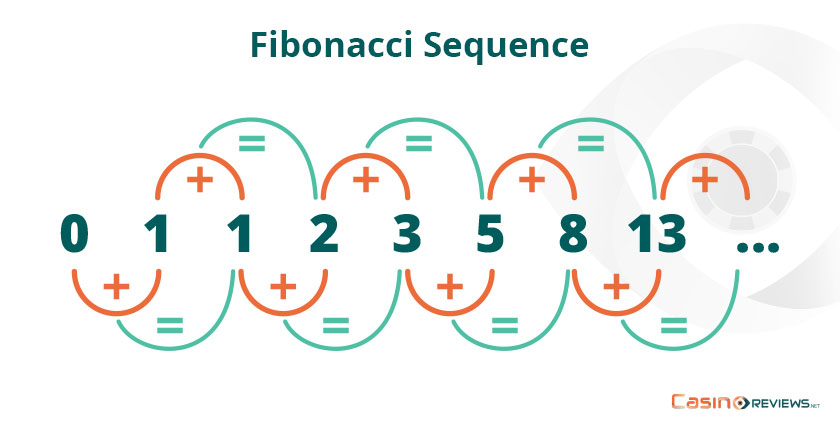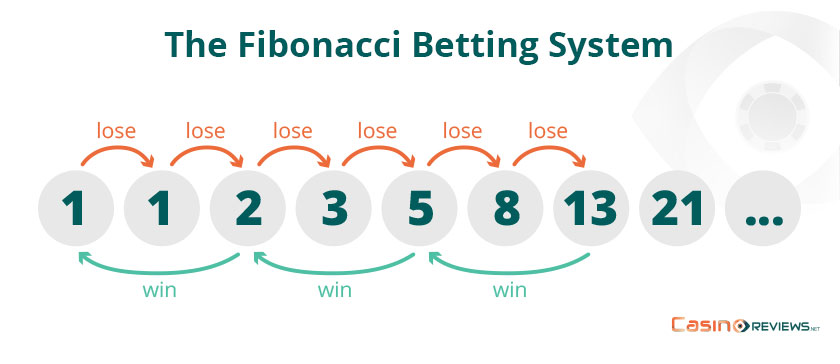Unlocking the Secrets of the Fibonacci Betting System in Roulette

The Fibonacci system of betting is a particular negative progression system, which assumes increasing the stakes when you loose or/and decreasing the stakes when you win. It is named after the Italian mathematician Leonardo Bonacci, pseudonamed as Fibonacci, who lived between the years of 1170 and 1250.
As a relatively simple system, it is used by both beginners and advanced players, and not only in roulette, but also in other casino games and sports betting. In this article you will see how the Fibonacci system works and what the rationale is behind it.
What Is the Fibonacci Sequence?
Fibonacci has constructed the well-known sequence with the same name, defined as follows: The sequence starts with numbers 0, 1, and then any term of the sequence is determined as the sum of the previous two terms. Concretely, the Fibonacci sequence looks like this: 0, 1, 1, 2, 3, 5, 8, 13, 21, 34, 55, 89, 144, 233, 377, 610, …

This sequence proved to have interesting mathematical properties for roulette. A nice such property is closeness, saying that any positive integer can be written as a sum of Fibonacci numbers each taken at most once. For instance, 116 = 1 + 5 + 21 + 89. The sequence was later found to have a close relation with the so-called ‘golden number’ (φ = 1 + √5 / 2 = 1.61803398...), since the general term of the sequence is expressed as a polynomial function of φ.
The Fibonacci sequence even came to be perceived in a mystical light when it was observed that the golden number is widely spread in nature – some specific anatomic proportions in the bodies of animals and humans are equated with the golden ratio and the growth rate of some spirals (that of the flower petals or mollusk shells) also equals this number. But what does the Fibonacci sequence have to do with gambling? We will see further.
Origins and Mechanics of the Fibonacci Betting System
Of course, it was not Fibonacci who found such an application for his sequence (at that time, gambling was not involving the present casino games where betting systems can be applied). Still there is no documented evidence crediting any gambling expert with the authorship of this system, nor providing a date for its entrance in gambling. It is important to mention that using the Fibonacci sequence in roulette is riskier than for example the D’Alambert roulette betting system.
The Fibonacci betting system (also called the Whittaker system) works as follows: The numbers in the sequence stand for the stakes of the bets. Like in other progressive systems, it is recommended that you place only even money bets, which have the highest probability of winning. These could be Red/Black, High/Low, or Odd/Even bets, in whatever succession or repetition.
You can start at any term in the sequence, but it is recommended to start with number 1 (ignore the first term zero), at least when you don’t have a solid bankroll. Now your initial stake is 1 (one chip or one unit in any currency). If you win, you may start the system again. If you loose, you increase your stake to equal the next term in the sequence. You take this action of moving forward in the sequence with one term every time you loose. When you win, you move back two terms in the sequence and bet with that stake. Then repeat the process until you reach back the first term of the sequence. When this happens, the system ends and you may replay it or leave.
Hence the general rule of the system is to move forward in the sequence with one term if you loose and move back with two terms if you win.

Let’s see how the system works in a concrete imaginary example:
- Step 1. Bet $1 and loose. Your current loss is $1. Move forward to number 1.
- Step 2. Bet $1 and loose. Your current overall loss is $1 + $1 = $2. Move forward to number 2.
- Step 3. Bet $2 and loose. Your current overall loss is $2 + $2 = $4. Move forward to number 3.
- Step 4. Bet $3 and loose. Your current overall loss is $4 + $3 = $7. Move forward to number 5.
- Step 5. Bet $5 and loose. Your current overall loss is $7 + $5 = $12. Move forward to number 8.
- Step 6. Bet $8 and loose. Your current overall loss is $12 + $8 = $20. Move forward to number 13.
- Step 7. Bet $13 and loose. Your current overall loss is $20 + $13 = $33. Move forward to number 21.
- Step 8. Bet $21 and win. Your current overall loss is $33 – $21 = $12. Move back to number 8.
- Step 9. Bet $8 and loose. Your current overall loss is $12 + $8 = $20. Move forward to number 13.
- Step 10. Bet $13 and win. Your current overall loss $20 – $13 = $7. Move back to number 5.
- Step 11. Bet $5 and loose. Your current overall loss is $7 + $5 = $12. Move forward to number 8.
- Step 12. Bet $8 and win. Your current overall loss is $12 – $8 = $4. Move back to number 3.
- Step 13. Bet $3 and loose. Your current overall loss is $4 + $3 = $7. Move forward to number 5.
- Step 14. Bet $5 and win. Your current overall loss is $7 – $5 = $2. Move back to number 2.
- Step 15. Bet $2 and win. Your current overall loss is 0. Move back to number 1.
- Step 16. Bet $1 and win. Your current overall profit is $1.
You have reached the lower end of the sequence and the system has completed.
Explaining the Popular Roulette Betting System
Since any win is associated with a two-term move back and any loss with a one-term move forward in the sequence and the probability of a win and loss are equal, overall you will move more back than forward in the long run you will reach the lower end of the sequence, whatever the distribution of the losing-winning roulette bets. But this theoretically is certain only at infinity. Of course, the Fibonacci system would work best if you have a high enough bankroll to sustain the cumulated loss and remain in play. If this is the case, you will end up with a profit equal to your initial stake.
But why moving back two numbers? Observe in our concrete example that any win except the last two reduced the cumulated loss, but the win did not cancel or exceed the cumulated loss, like in the Martingale. Actually with any win after a streak of losses, the player recovers the previous two losses, as the current stake is the sum of the two previous stakes lost. If the point where the player moves back in the sequence is not the lower end, there is still previous loss to be recovered. This loss is partially or totally recovered with the new win.
This is why any win will move back the stake two numbers in the sequence. When the lower end is reached back and that bet is won, the overall profit will be exactly the initial stake (1 in our example). It’s all in the construction of the sequence.

Fibonacci versus Martingale
The Fibonacci betting system in roulette games is in the category of negative progression systems, like the Martingale. However, it is less aggressive and assumes a lower risk, since the loss cumulates less accelerated than in the Martingale betting system, where it increases exponentially. Yet, as we mentioned earlier, the Fibonacci system is riskier than other progressive systems, such as the D’Alembert system (where the stakes increase with only one unit).
Another resemblance with the Martingale is that the final result of using the system successfully is a profit in the amount of the initial stake, regardless of how long is the succession of steps necessary for recovering the cumulated loss. This of course reverts to a low profit rate. In our example, this rate is 1/99 = 1.01%.
The main difference is that long streaks of losses affect the bankroll far strongly in the Martingale than in the Fibonacci system: In our example, the initial streak of seven losses with an initial stake of $1 resulted in a cumulated loss of $33, while with a Martingale would have been collected a $127 loss in such a streak.
Another difference between the two systems is that with Fibonacci it usually takes a long time to get back to the start of the sequence and collect your profit, so you must be patient if using the Fibonacci system. The effectiveness of the Fibonacci system is also affected by a long losing streak, like the other progressive systems. Such streaks result in a high cumulated loss and a longer time to end the sequence back to its first term.
- Relatively easy to understand and apply.
- Relatively low rate of increasing the stake (low to medium risk).
- Hard to recover loss after a streak of losses.
- Low profit rate.
Conclusion
In summary, the Fibonacci betting system presents a medium-risk approach to gambling with relatively modest capital requirements and a need for patience. While it offers a lower profit potential compared to more aggressive strategies like the Martingale, it is notably safer.
This system proves versatile, making it suitable for a wide range of players and games, including both beginners and more experienced individuals. Its appeal lies in its ability to provide a balanced, sustained approach to betting, making it ideal for those who value a steady, methodical approach over the allure of quick, high-stakes wins in short gaming sessions.





Review this Blog
Leave a Comment
User Comments
comments for Unlocking the Secrets of the Fibonacci Betting System in Roulette